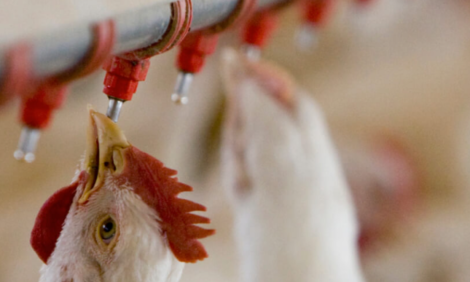



IPPE: Constant Progress in Poultry Performance, but Challenges Remain
US - Speaking at the Poultry Market Intelligence Forum at the International Production and Processing Expo (IPPE) in Atlanta last week, Michael Donohue from Agristats described the huge leaps and bounds the poultry industry has made since he first started working in it in the 1980s.Mr Donohue compared the genetic goals he had set in the 1980s with what has actually been achieved today, saying the rate of change has been phenomenal.
"Our genetic goal was a four-pound chicken, in 52 days, with a 2.1 feed conversion. People laugh at that right now. You're probably looking right now at a four-pound chicken in about 33 to 34 days, maybe 32 would be the genetic potential, and with a feed conversion ratio of 1.45-1.50."
He added that we may not yet have seen the horizon on these improvements, and that the slow but constant gains in poultry productivity had big benefits for consumers in terms of price.
Over the past two years, Mr Donohue said the gains in breeder genetics had been particularly dramatic, emphasising the importance of new genetic tools.
"It tells me that genetic progress can still be made... There's a lot of ongoing opportunity to select for all the characteristics we believe are important in our industry."
The improvements came not only in the rate of lay, but also in the hatchability of the eggs. This was helped by better animal health.
Liveability increased and condemnation decreased as the industry steadily improved performance over many years.
On meat yields, Mr Donohue said that broiler weights and eviscerated yields had both increased, as genetics companies developed birds with smaller heads and gizzards and fewer feathers relative to muscle.
He said that white meat yields had gone from about 14 per cent of live weight 20 years ago, to about 24 per cent of live weight now. However, this has caused some challenges in terms of woody breast condition and meat quality.
In the turkey sector, Mr Donohue said that mortality had decreased over the past few years, and feed conversion efficiency and eviscerated yield had increased.
The avian flu outbreaks in the US last year had huge impacts on the turkey and layer sectors, and egg production fell sharply, with corresponding effects on consumer prices. But Mr Donohue said that going forward the egg sector would benefit from a resurgence in popularity and a healthier perception of egg consumption.
He added that all these improvements had led to an increase in sustainability of the industry, with a smaller area of crop fields and poultry houses needed to produce the same amount of meat.
Mr Donohue said the goal was to produce healthy chickens, as this would ensure a safe protein source for consumers.
"Yes we are driven by the bottom line, but we a better job on the bottom line when we have good health and worker safety, and good food safety."
Challenges of poultry management without antibiotics
However, Mr Donohue said that the rate of gain on some measures of performance was not quite as fast as he had seen in previous years. He suggested that this might be down to the growing trend for antibiotic-free production, as producers lose tools for keeping flocks healthy.
He said that poultry are generally given fewer antibiotics in summer than in winter, as health conditions are better in the warmer season.
Looking at his data on birds processed without any non-coccidiostat feed medications, Mr Donohue said this sector had risen substantially in the past 18 months to 46.1 per cent of birds processed. Not all of these birds will be sold as antibiotic-free, and some will just not receive drugs as part of a normal medicinal rotation programme, but Mr Donohue said the figures represented a long-term trend of what retailers and consumers want.
Another factor in productivity is downtime, as the longer a poultry house remains empty, the more the viral or bacterial load is reduced in the environment, and the healthier the next flock going into that house will be.
Mr Donohue said: "For the last three years, we've been cutting our downtime by about 5 per cent a year." In combination with the loss of some antibiotics used to maintain bird health, he considered this practice had caused reduced rates of improvement in liveability in recent years.
He predicted that profitability in the industry could be fragile this year, depending on crop yields and feed ingredient costs, which further depend on the weather.
Mr Donohue advised farmers to focus on the profitability aspects of their businesses that they can control.








